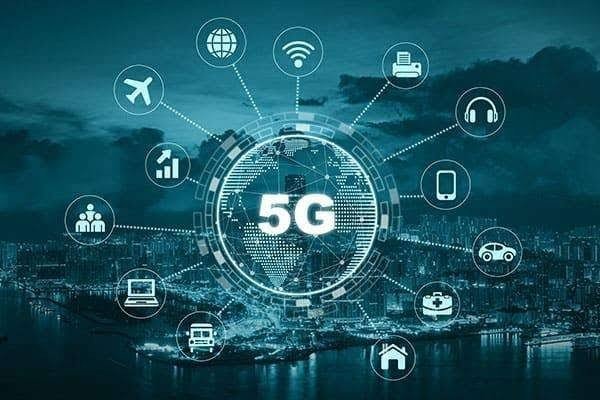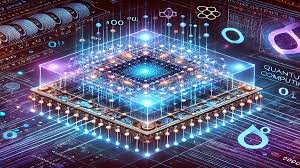5G Technology: Revolutionizing Connectivity and Its Impacts

The advent of 5G technology is reshaping the digital landscape, promising unparalleled connectivity, faster internet speeds, and transformative applications across industries. As the fifth generation of mobile networks, 5G goes beyond enhancing personal communication to powering smart cities, autonomous vehicles, and the Internet of Things (IoT). This article explores how 5G is revolutionizing connectivity and its far-reaching impacts.
What is 5G Technology?
5G stands for the fifth generation of wireless technology, offering significant improvements over its predecessor, 4G LTE. It operates on three frequency bands: low, mid, and high, enabling faster speeds, reduced latency, and enhanced reliability.
Key Features of 5G
- High Speed: Download speeds up to 10 Gbps, far surpassing 4G.
- Low Latency: Delay as low as 1 millisecond, critical for real-time applications.
- Massive Connectivity: Supports up to 1 million devices per square kilometer.
- Energy Efficiency: Optimized power usage for extended device battery life.
See also: The Future of Artificial Intelligence: Trends and Innovations
How 5G is Revolutionizing Connectivity
1. Speed and Bandwidth
5G delivers blazing-fast internet, enabling seamless streaming, faster downloads, and high-quality video conferencing. This bandwidth revolution supports data-heavy applications like 4K and 8K video streaming.
2. Low Latency for Real-Time Applications
Ultra-low latency is a game-changer for applications that demand instant responses. From remote surgeries using robotic tools to immersive virtual reality experiences, 5G eliminates delays.
3. Massive IoT Integration
5G connects billions of IoT devices, enabling smart homes, cities, and industries. It supports real-time data collection and processing, enhancing automation and decision-making.
4. Enhanced Network Reliability
5G networks are designed for greater stability, ensuring uninterrupted connectivity for critical services like healthcare, emergency response, and financial transactions.
Applications of 5G Technology
1. Smart Cities
5G enables the development of smart cities by connecting traffic lights, surveillance systems, waste management, and public utilities. This improves efficiency and quality of life.
2. Autonomous Vehicles
Self-driving cars rely on real-time data to make decisions. 5G ensures seamless communication between vehicles and infrastructure for safe and efficient navigation.
3. Healthcare
Telemedicine, remote surgeries, and wearable health devices benefit from 5G’s low latency and high reliability, making healthcare accessible and efficient.
4. Industrial Automation
Factories use 5G to connect machines, sensors, and robots, enabling precision manufacturing and predictive maintenance in smart industries.
5. Entertainment and Gaming
5G enhances streaming, AR/VR experiences, and cloud gaming, delivering smoother and more interactive entertainment.
6. Education
Virtual classrooms and augmented reality learning experiences become more accessible, bridging gaps in education delivery.
Impacts of 5G Technology
Economic Impacts
5G is projected to contribute trillions of dollars to the global economy by driving innovation, creating jobs, and improving productivity in sectors like healthcare, transportation, and manufacturing.
Environmental Impacts
While 5G supports energy-efficient devices and applications, its infrastructure requires significant energy for operation. Sustainable practices and renewable energy can mitigate these effects.
Social Impacts
5G bridges the digital divide by bringing high-speed internet to remote and underserved areas. However, disparities in infrastructure deployment could widen gaps in some regions.
Security Concerns
5G’s expanded attack surface raises concerns about cybersecurity and data privacy. Enhanced encryption and robust security protocols are essential to address these risks.
Challenges in 5G Implementation
1. Infrastructure Costs
Building 5G infrastructure requires substantial investment in new towers, fiber-optic networks, and equipment.
2. Spectrum Allocation
Limited availability of spectrum bands and regulatory challenges can delay deployment.
3. Compatibility
Older devices may not support 5G, requiring users to upgrade to compatible hardware.
4. Environmental Concerns
Increased energy demands for 5G networks necessitate sustainable solutions to minimize environmental impact.
The Future of 5G Technology
As 5G adoption grows, its potential applications will expand into areas like artificial intelligence, quantum computing, and space communication. By enabling faster, more reliable connections, 5G will drive advancements in every aspect of life, from personalized medicine to next-generation entertainment.
Conclusion
5G technology is more than just a faster network; it is a transformative force driving innovation across industries. By revolutionizing connectivity, enabling smart technologies, and creating economic opportunities, 5G is shaping the future of our interconnected world. However, addressing challenges like infrastructure costs and cybersecurity will be crucial to fully realize its benefits.




